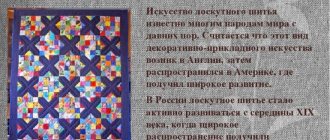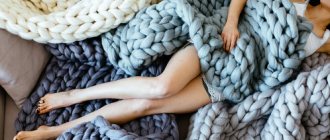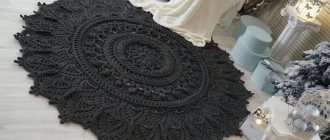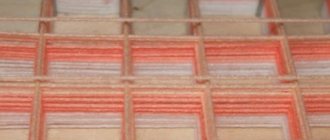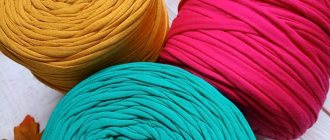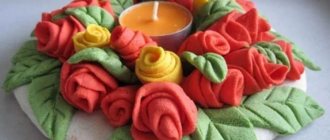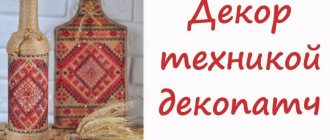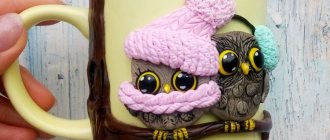Short review
When choosing a model of a future product, a pattern and a knitting method, it is necessary to take into account the complexity of the work. Beginner needlewomen are recommended to start knitting with simpler patterns to gain experience.
It is also worth considering initially who will use your product. If you are knitting a baby blanket, you need to choose the right yarn and pattern. We can say that knitted blankets are a certain type of art.
Wool for a blanket
Natural fiber with a pleasant appearance. It features the greatest possible variety of shades, which allows you to work on creating an original design.
The thread is strong, but the finished product is not durable. After several washes, the blanket may stretch, shrink, or lose its original appearance.
In addition, it will be extremely difficult for novice needlewomen to work with this type of yarn. Baby blankets should not be knitted from pure wool yarn, as the material will scratch the baby’s delicate skin.
We recommend reading:
Knitting bactus with knitting needles - detailed description with photos and diagrams. Step-by-step instructions and recommendations from craftswomen. TOP 30 best modelsKnitting socks with knitting needles - step-by-step master class with instructions. A selection of the best knitted socks models
Garter Stitch Knitting - 140 photos and videos of basic garter stitch patterns and projects
Knitting lessons with knitting needles for beginners
Blankets are the simplest products that you can knit yourself. But before you start, you should pay attention to the following factors:
- For knitting, use only a double-sided pattern, since the wrong side will also be visible.
- Take care to finish the edges of the finished product.
- A wide blanket is knitted with circular knitting needles.
- It is also possible to decorate the reverse side with fabric.
In order to knit a blanket with a pattern you need:
- Set of knitting needles
- Yarn
- Select pattern
- Calculate the size of the product.
Knitting a blanket, the work of our authors
Children's blanket Hare with ears
Good day, dear fairies. Ten months ago I became a grandmother. We gave birth to the most beloved man in the world - our granddaughter. The first gift for my sweetie was this blanket, knitted using stockinette stitch from Alize threads
Read more…
Description of a baby blanket made with knitting needles from Galmik
Size 120 cm x 85 cm. For knitting you need 500 g of yarn 300 m per 100 g. I have Karachaevsky acrylic, a two-thread skein, 2 skeins. Knitting needles circular or straight 4 mm. It is more convenient to knit in circular ones. Loops are distributed
Read more…
Knitted blanket Red fox
Knitted blankets are one of the most cozy and pleasant things that you can create with your own hands. In addition, such a household item, which will warm you up on autumn or winter evenings, can also be incredible
Read more…
How to knit a plush blanket with knitting needles
It's incredibly soft, in a subtle color scheme. I knitted it with 4.5mm knitting needles loosely (to make it airy). Knitted from YarnArt Dolce yarn. Manufacturer: YarnArt (YarnArt) Turkey Yarn composition: 100% Micro Polyester Thread length: 120 m. Skein weight: 100 g. For size 1.10
Read more…
Knitted blankets from Lyudmila
Hello. I want to show you three blankets that I recently knitted. All three are knitted from Bulgarian Yori yarn. Composition: 100% tactel (microfiber), 100 g/240 m. The yarn is soft and fluffy. Knitted in garter stitch, needles No. 4 (hoop in
Read more…
Striped knitted blankets from Tatyana
Hello, dear needlewomen. I decided to share my work. Size approximately 120x180 cm. It is good to wrap yourself in it on a cool evening at the dacha, or at home. You can take refuge lying on the sofa. One of the first defective
Read more…
Beautiful children's blanket
I knitted it for my little grandson. Knitting needles No. 3.5 and hook No. 2 for tying. Size: 110 cm / 88 cm. Knitted from threads: 1) “Krokha” Yarn from Troitsk, 50 g – 135 m (20%
Read more…
Double-sided blanket knitted Cats. Irina's work
Double-sided jacquard blanket knitted “Cats”. Knitted from Semenovskaya yarn “Olga” 50% acrylic, 50% wool. I love cats very much, I collected them all in one work. First I knitted the central part. It didn't seem like much. Added cats around the perimeter. I wanted more
Read more…
Blanket for a girl, Lyudmila's work
Size 75×72, weight 213 g. I specially knitted it in this size so that it could be used for discharge from the maternity hospital, if my daughter likes it, of course. Himalaya medical baby yarn (100g/310m). Composition: 70% acrylic and 30% amicor. The yarn is antibacterial, antiallergenic. Manufacturer's recommendation
Read more…
Knitted blanket with sea foam pattern
Sea foam pattern. Yarn Alize BURCUM Batik 100% acrylic 100g/210m. It took 1 kg. Knitting needles 4mm. The blanket turned out to be 120x175 cm in size (without fringe). A bit harsh, but it’s better to use wool for blankets
Read more…
Wool blanket, Pelageya's work
For knitting you needed: 2 kg 100 g. yarn (21 skeins). Composition 100% wool (110 m/100g); knitting needles 7. The pattern is knitted according to the same pattern as the previous blanket. But in order for the rhombuses to be not square,
Read more…
Knitted blanket Cats, work by Irina
Plaid “Cats”. Knitted from acrylic yarn in three colors. The main knitting, jacquard patterns, are made with knitting needles. The connection of the strips is made with a crochet hook. I sewed a soft terry sheet on the wrong side. The result is a denser fabric that holds its shape. Very cozy, soft, warm.
Read more…
Beautiful knitted blanket from Pelageya
Size 175*210. Composition: 50% wool/50% acrylic (150m/100g), knitting needles 5.5. Yarn consumption: 1900g. Description: cast on 241 sts (3 sts of pearl pattern + 235 sts of main pattern + 3 sts of pearl pattern). Knit 4 rows with a pearl pattern. From the 5th row (front side)
Read more…
Sheep wool blanket
Bedspread size: 166 x 172 cm. You will need: 2000 g of natural white yarn (100% merino sheep wool; 125m/50g); circular knitting needles No. 3.5, 120 cm long. Basic pattern: knit according to pattern A. In width, start with stitches before the 1st
Read more…
Knitted cotton blanket – Marina’s work
Baby blanket made of 100% German mercerized cotton. Size 80 x 95cm, convenient for use in a stroller. Very nice golden color) along the perimeter is decorated with a satin ribbon secured with gold buckles with rhinestones. Blanket knitting pattern: Blanket tying pattern:
Read more…
Knitted blanket - Lilia's work
I saw the model on the Burdastyle website. Wool blend yarn, blanket size 1.4 and 1.6 m. Among the changes: I made decorative rows dividing the plaid into nine rectangles; the gray collar and plastic eyes seemed unnecessary to me, and I also changed the braids along the perimeter.
Read more…
Knitted baby blanket - Lilia's work
Yarn 100% cotton. I knitted fragments that I sewed together. All instructions are in the photo. Model from Sabrina Baby magazine 2003. In general, the blanket turned out to be very popular, Asya adores it, so it’s worn out and it’s time to repair it. On
Read more…
Knitted blanket with cats
Knitted blanket with cats - Anna's work. Knitted with knitting needles No. 2.5; I used yarn in 100 g = 380 m. For size 1.5*2.0, you need to knit 28 squares. One square consists of 72 loops. Cat knitting patterns:
Read more…
We knit a baby blanket
Every young mother faces the question of how to knit a baby blanket? This issue should be approached with full responsibility. To do this, you need to choose high-quality soft yarn that does not prick and does not cause allergic reactions.
It is recommended to carry out the work directly using knitting needles, then the product will turn out soft and airy.
The Internet provides a huge number of photos of knitted blankets for children, after studying which you will choose a beautiful and exclusive option for yourself. This blanket will keep your baby warm in cold weather.
How much yarn do you need for a blanket?
Ooooh, that was the hardest question. I tormented the search engine with this question and for a long time could not find a normal answer. Everything was terribly confusing. Somewhere yarn was measured by weight, somewhere in meters, somewhere in balls. Mom dear!
I didn’t understand anything, I was terribly afraid that I would buy only enough yarn for a blanket for photo shoots - it turns out that on beautiful layouts on Instagram they often use not a full-fledged blanket, but a fake piece of a small blanket, especially for photo shoots - or I would buy so much of it that instead there will be a rug and a carpet.
As a result, I finally figured it out with the “Cozy Store”.
Here are the sizes and required amount of yarn:
- Blanket 80x120 cm – 2 kg
- Blanket 100x150 cm – 3 kg
- Blanket 130x170 cm – 4.5 kg
- Blanket 150x200 cm – 6 kg
For a medium-sized blanket, 3 kilograms of yarn were needed.
All the yarn was in one ball, so I didn't have to tie it and hide the knots while knitting. This volume of yarn produced a blanket measuring 100 by 135 cm (I measured it with a ruler!).
This is exactly what was needed. It's decorative, so I place it at the foot of the bed.
Large knitting of blankets
Knitting blankets in large knitted pattern
Today, large knitted blankets are very popular. For this product, combed tape is often used.
Positive qualities of the product:
- It is possible to knit a blanket without knitting needles, and use only your own hands.
- The blanket made using this technique is soft, light and airy.
- Untreated wool gives the product an extraordinary charm.
Negative qualities for beginners in knitting:
- It is very easy to tear the combed tape during operation.
- Pills appear on untreated wool, there is a possibility of the product losing its shape and the fibers delaminating during the knitting process.
- It is not recommended to clean this blanket by washing.
Blankets made with large knitting are recommended to be cleaned in specialized dry cleaners.
Blanket for a child
You can knit a blanket for your baby to further surround him with care and warmth. But it is worth remembering that you need to choose high-quality soft yarn to make the product pleasant to the touch.
Plush is most often used. Products made from it are incredibly soft and warm. What a child needs.
By showing your imagination, you can make not just a warm, comfortable blanket, but also a beautiful and interesting thing. As a pattern, you can choose characters from fairy tales and cartoons, or simple motifs such as snowflakes or hearts.
This thing can be used as a blanket for a baby leaving the hospital, or as a blanket for a walk, or just for sleeping. A blanket with beautiful patterns will perfectly decorate a child’s room, so you can use it as a bedspread. You can give it to nephews, godchildren or children of relatives and friends.
Knitting a blanket with your own hands is an exciting activity where you can show your skill and imagination. A blanket can be a wonderful decorative item or a wonderful gift for loved ones.
Crocheting a blanket
It is possible to knit a soft and beautiful blanket not only with knitting needles, but also with a crochet hook. These products are in no way inferior to knitted blankets.
NOTE!
- Knit a tunic - simple patterns and recommendations for choosing models for children and adults (130 photos)
- Knitted overalls for newborns - knitting pattern and description of sewing the best modern models (105 photos)
Jacquard knitting patterns: knitting patterns and tips for choosing the best patterns for beginners and professionals (115 photos)
When crocheting, it is possible to create a unique openwork pattern. Such products are suitable for both adults and small children.
These bedspreads also decorate the house and complement any interior. In order to understand how to crochet a blanket for beginning craftswomen, there are many simple patterns on the Internet that you should practice using to gain experience.
Acrylic for knitting
A synthetic fiber characterized by a pleasant shine of the finished product. The thread is strong, glides easily along the knitting needles, even a novice craftsman can work with it. Finished products are resistant to deformation and frequent washing.
However, acrylic threads are quite cold, so only summer knitted blankets are created using them.
And here https://gidrukodeliya.ru you can visit a real club for lovers of needlework and crafts.
Openwork blankets
For lovers of exclusive decorative elements, there is a method of knitting blankets from motifs, which in the course of work are connected to each other and create unique openwork patterns.
Often, floral motifs are used for such bedspreads. These blankets will perfectly decorate your bedroom or living room.
Angora for blanket
Natural soft and fluffy fiber allows you to create children's blankets with bright patterns and delicate pile.
We recommend reading:
- How to knit a turban with knitting needles - 115 photos and videos of ideas, patterns and features of knitting a turban
Knitting bags - 155 photos and videos on how to quickly knit a stylish bag with descriptions and diagrams
Knitting a jacket: 125 photos and video description of knitting with patterns for beginners and masters
Unfortunately, some of the fluff will be lost during use, and after washing the fluff must be tidied up to return to its original appearance.
Square bedspreads
The most optimal method of knitting blankets for beginners is the method using separately knitted squares
.
NOTE!
How to knit a rug - detailed instructions and diagrams on how to properly knit a neat, beautiful rug- Knit a men's sweater: step-by-step instructions on how to quickly and easily knit a sweater with your own hands (80 photos)
How to knit socks - step-by-step description and recommendations on how to knit warm socks correctly and quickly (85 photos)
Positive traits:
- Ease of doing the job
- Possibility of eliminating errors
- Compactness
- Each element can be connected with different schemes.
Using this method, you can gain experience in performing various patterns and at the same time you will get a beautiful knitted blanket.
Knitting Canadian elastic
The technique is based on the creation of an openwork motif and relief patterns on the canvas. Before starting work, it is worth creating a ready-made scheme for forming the ornament, deciding on the color composition and size of the blanket.
For beginning craftsmen, the modular principle of operation or the use of circular knitting needles, which allow knitting large items, is best suited.
Knitting a voluminous blanket, bedspread, coarse knit blanket for children: diagram, description
Blanket made of thick yarn
A voluminous blanket will perfectly decorate a child's room. It can be placed on the bed or on the floor to keep your baby warm and cozy. It is necessary to knit such a product in the same way as for adults: in stockinette stitch. To create a small blanket, cast on no more than 15-20 stitches. You also need to knit no more than 20 rows in length. To create this product you will need no more than 1 kg of merino wool. Find the knitting pattern and description above in the text.
A simple beautiful crocheted blanket made of openwork squares
Knitting blankets in squares is very simple and convenient: one square a day and little by little you can move towards your intended goal, the entire large product does not get in the way under your hands, you can knit anywhere - in transport, at the dacha, on vacation.
First, knit one square, steam it through a damp cloth and estimate how many of these you will need in width and length.
It is more convenient to connect the squares together along the wrong side with connecting posts behind the inner walls of the loops.
A very interesting simple pattern of a blanket with dense vertical and horizontal paths in the center and openwork corners. But the main thing here is beautiful colors.
How to tie
We make a ring of 8 chain stitches, connecting the first and last loops.
Row 1: 4 times 5 C1H and 3 VP between them (here and further at the beginning of the row, instead of the first column - 3 air stitches).
Row 2: above the columns of the previous row we knit 5 C1H (and then in each next row the same), between them in the corners of the resulting square - 5 VP.
Row 3: 5С1Н; in the corners - 2 VP, 3S1N in an arch, 3VP, 3S1N, 2VP.
Row 4: 5С1Н; 4 VP, 3S1N in an arch, 3VP, 3S1N, 4VP.
Row 5: 5С1Н; 5 VP, RLS under the first arch (of 4 loops), 5VP, 3S1N in the corner arch, 3VP, 3S1N, 5VP, RLS in the next arch, 5VP.
Row 6: 5С1Н; 4 VP, RLS under the first arch, 4VP, RLS under the second arch, 4VP, 3S1N in the corner arch, 3VP, 3S1N, and then in reverse order RLS in the arches through 4 air ones.
Video
You can also watch a video on how to knit this square.
The finished blanket is decorated on two narrow sides with long tassels. The crocheted blanket is simple and beautiful.
The choice of yarn depending on the chosen knitting technique
Experienced craftswomen choose yarn, focusing primarily on the technology for creating a particular model.
Patchwork is a technology for assembling a single fabric from scraps. In the case of knitted blankets, individual related motifs are used, connected to each other. Skilled needlewomen use remnants of thread from past projects.
The motives for the plaid are varied. The entire blanket can be created from threads of one, two or several colors. All the pieces can be the same or completely different - it depends only on the imagination of the master and the desired result.
Both fine and medium-sized yarn are suitable for knitting prefabricated patterns. The main rule when choosing is that all threads must be the same thickness. It is also important to remember that the thicker the thread, the rougher the pattern. Thick thread makes the blanket very heavy and makes the job of sewing the pieces together more difficult.
Bavarian knitting is a technique of crocheting a single fabric from air loops. A distinctive feature is knitting small circles without breaking the thread. By combining different colors with each other, you can achieve very interesting and original designs.
For knitting in this technique, it is best to use thin and medium wool threads. And, if you decide to knit a blanket from multi-colored yarns, you need to choose threads of the same thickness.
The Scandinavian method (double-sided jacquard) is a rather complex type of knitting. The peculiarity of this technique is in the drawing. The blanket is knitted from two threads of different colors. As a result, the chosen motif is clearly visible from both the front and back sides.
This technique can be worked using any type of yarn. Alpaca, merino, and angora rabbit wool are excellent. Blankets knitted from plush yarn look very beautiful.
Openwork and lace blankets are valued for their extraordinary beauty of execution and airy structure. Of course, such work requires a lot of effort, because the perfect pattern is created thanks to the endless patience of the craftswoman. But the result certainly pleases both the needlewoman herself and everyone around her.
There are a huge number of patterns for knitting lace motifs indicating the specific yarn for a particular pattern. The thinnest blankets are made from natural materials, synthetic threads or mixed yarns. You can create lace from thin wool, acrylic and viscose.
The thickness of the yarn may vary depending on the chosen blanket model. Here it is important to take into account one single rule: the tighter the thread is twisted, the clearer the pattern will be. Down lace is a completely different type of openwork; the motif of the design is not clearly visible, but can only be guessed on the canvas, covered with a continuous veil of down.
Waffle pattern for a blanket
Simple baby blankets can be knitted in a beautiful waffle pattern.
A photo of needlewoman Olga Evstropova, who once participated in our competition, has already spread all over the world. It can be found on many sites, including foreign ones, and videos have been made using it (not me). But no one sees it on my blog, but that’s another story.
Once again I want to remind you how to knit a waffle pattern:
1st row: single crochets.
2nd row: 1С1Н, 2 raised convex double crochets.
3rd row: 2С1Н, 1 embossed column.
We have detailed information about knitting children's blankets, sizes, yarn, patterns of patterns both crocheted and knitted, how to make a lining, in a separate post.
Selection of tools and materials
Spokes
For knitting a blanket, closed knitting needles are suitable - long, with stops at one end; they will not allow loops to slip off from the back side, they are convenient for small-width blankets or making individual fragments.
Short circular knitting needles connected with fishing line are preferred for making wide, solid knitted fabric. The knitting needles also differ in thickness: optimal from 2.5-3 to 5.
Yarn
When using low-quality threads, there is a high risk that the product will quickly lose its decorative appearance, stretch or fade after washing.
Thinner yarn will display a complex openwork pattern in more relief; a thicker thread will produce a more voluminous product. The thinner the yarn for the blanket, the longer the knitting will take.
The composition depends mainly on the purpose of the future blanket. Natural threads, for example, from merino wool, are suitable - soft, warm, very pleasant to the touch. Cotton works well for a lightweight blanket. Mohair will help novice craftswomen hide possible mistakes. Angora and acrylic threads have proven themselves well.
The quantity is primarily determined by the size of the planned product, but also depends on the thickness of the yarn and the chosen pattern. Braids and other relief patterns significantly increase material consumption.
Read: The best room design ideas with a fireplace (100+ photos)
- A small blanket for a newborn, about 0.8 by 1 m in size, will require about 800 grams of yarn.
- Size 1.3 by 1.7 - an average blanket for a chair, consumption is about 1 kg of yarn.
- The standard size of a blanket is 1.5 by 2 m, optimal for a single bed; the approximate consumption is from 1.5 to 2 kg of thread.
- A blanket made from super yarn will require from 3 to 7 kg of material.
It can be difficult for beginning needlewomen to determine the required number of loops of the selected yarn for the desired width. In this case, you can knit a test sample, for example, 20 by 20 loops, using the pattern chosen for the blanket; then, measuring in centimeters, calculate the required width in loops. To get an idea of how much a given yarn shrinks when washed, you can wash and dry a sample before measuring.
An important detail is the edges of the future blanket; they give the product a neat, finished look. There are many design options - you can knit them right away, tie them around a finished blanket, or trim them with ribbon, lace, or the like.
